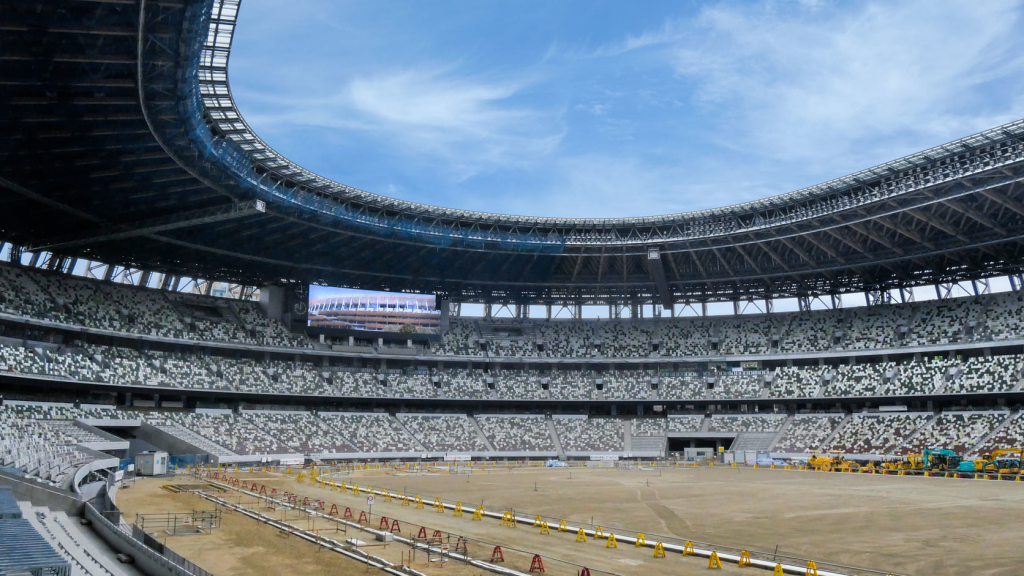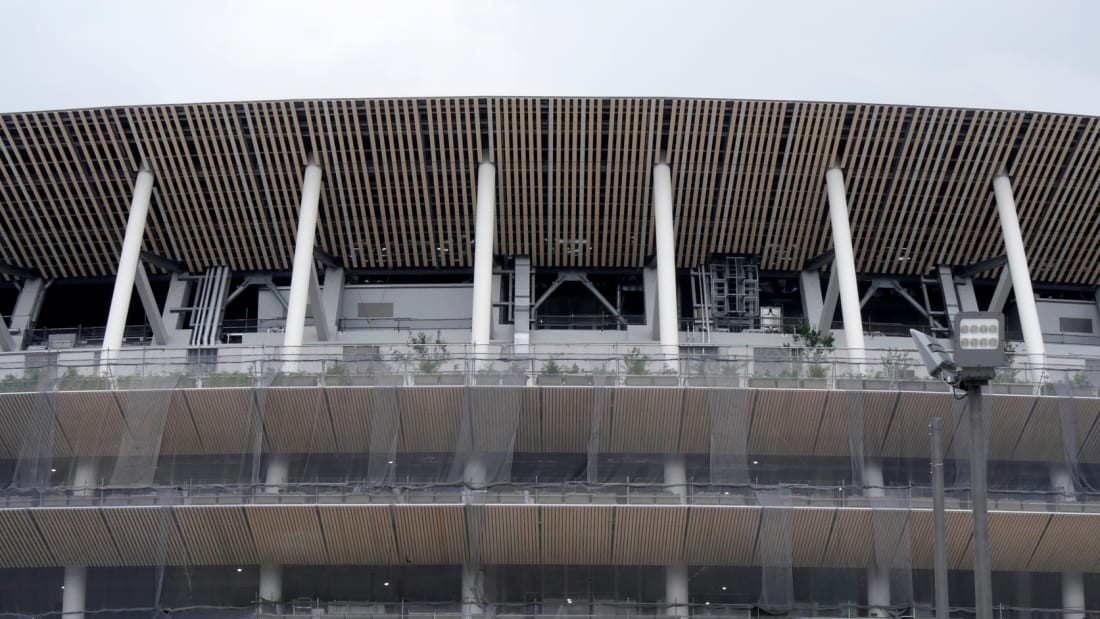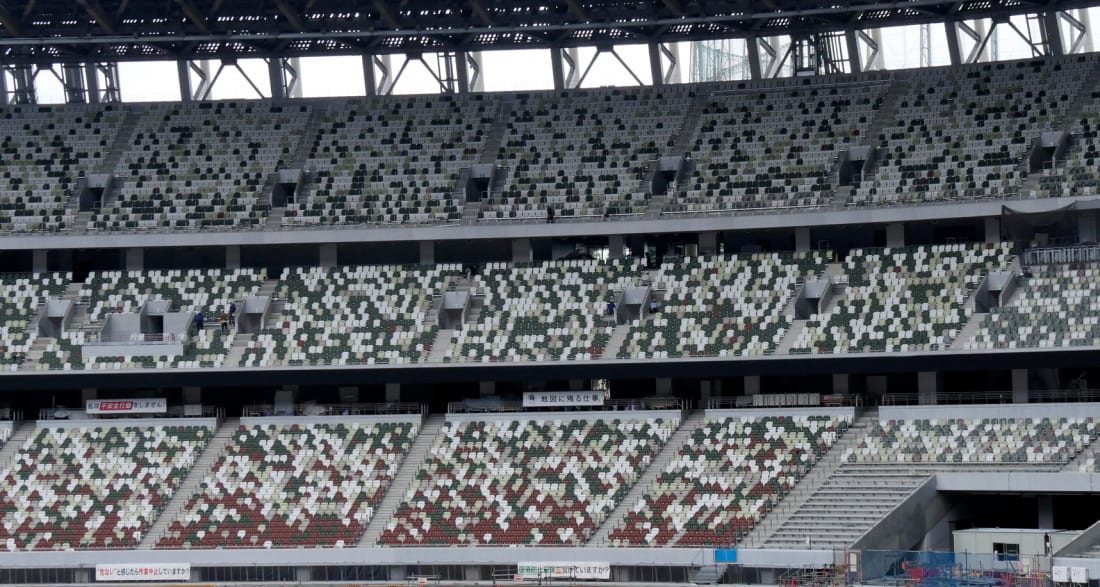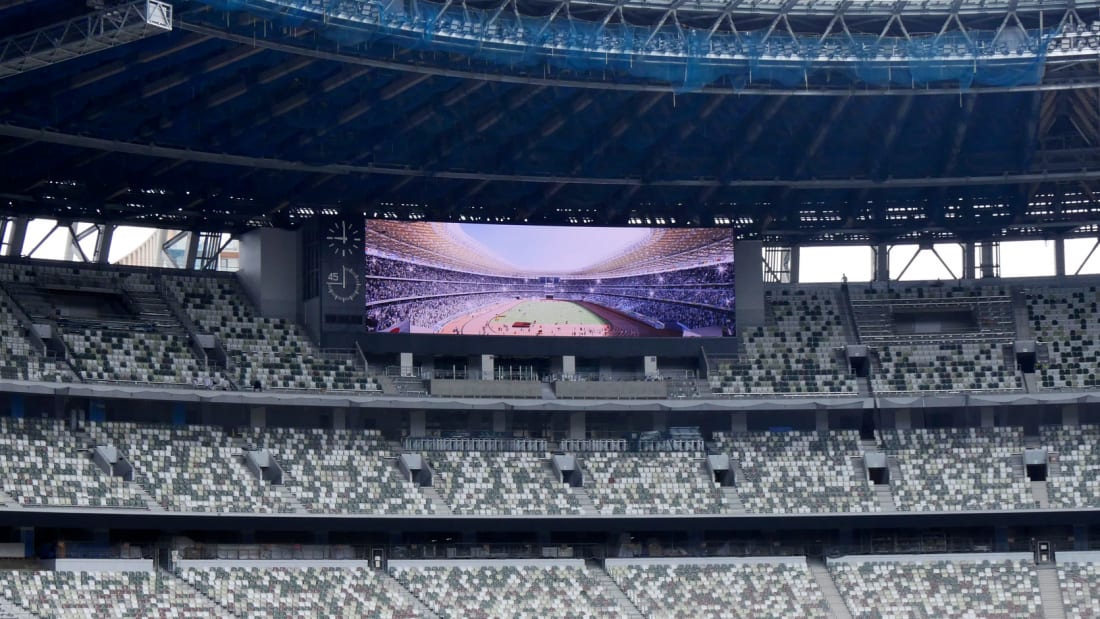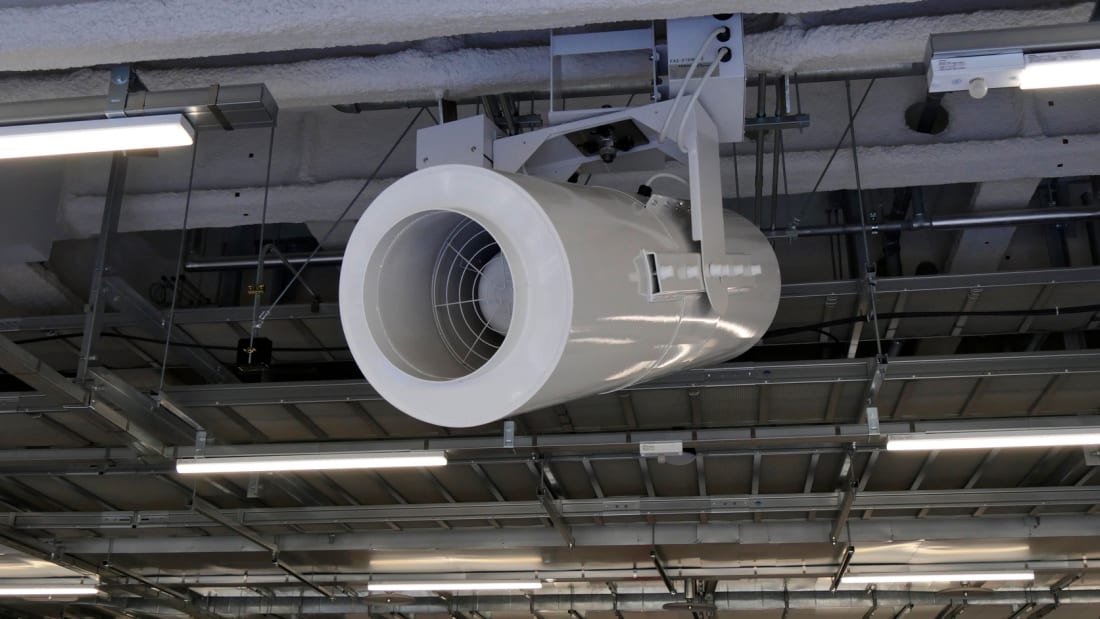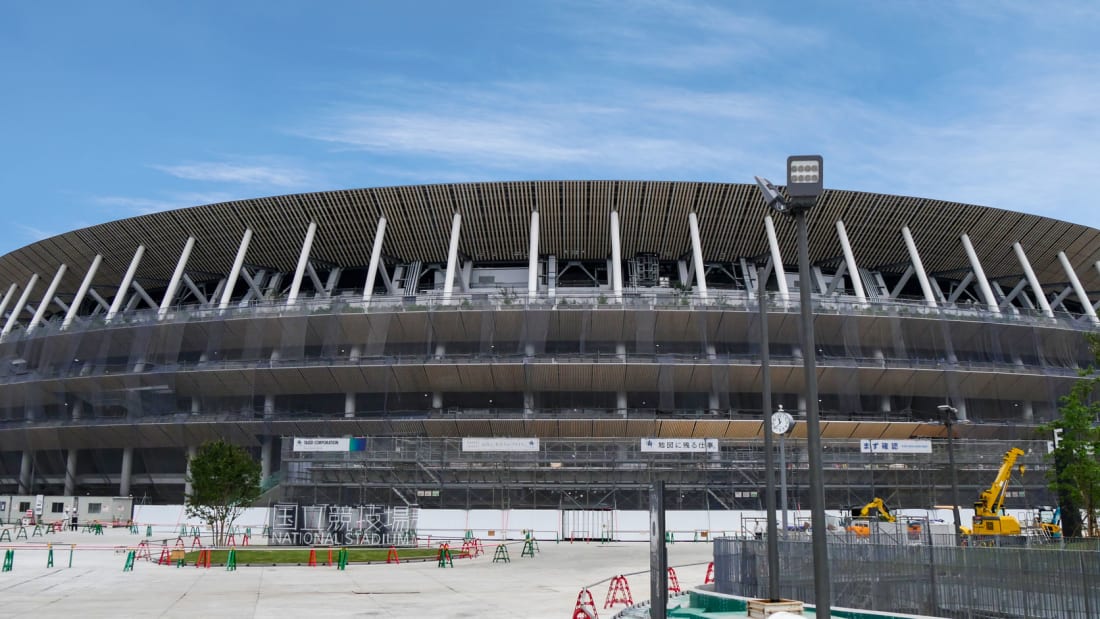As the Tokyo 2020 Olympics are set to launch in the middle of a pandemic, it is easy to forget the controversy surrounding the construction of the Japan National Stadium (formerly known as New National Stadium).
The original yonic design by the late Pritzker Award-winning architect Zaha Hadid was scrapped after costs projected to be three times more than London’s new Olympic stadium. The do-over meant the stadium would not be completed in time for next fall’s Rugby World Cup as originally intended. Add on top of that reports of overworked construction workers, the development of the new National Stadium has provided some juicy controversy for the international press to sink their teeth into.
When we visited in 2019, the new $1.6 billion, forest-themed National Stadium designed by prominent Japanese architect Kengo Kuma was 90 percent complete, with most of the exterior work finished. The grass had yet be planted on the infield of the track and work was underway on passageways and traffic control areas.
Due to the new design, completion of the stadium was delayed until December 2019, meaning it could not host the Rugby World Cup. After hosting multiple trial events and concerts, the stadium is now set host the Summer Games’ opening and closing ceremonies as well as Tokyo 2020’s track and field events.
Here’s was TW we saw during our sneak peek at the stadium’s progress in summer 2019.
The Forest from the Trees
Kuma’s design is based off the 1,300-year-old Gojunoto Pagoda at Horyuji temple in Nara Prefecture, the world’s oldest timber structure. As such, wood plays heavily into the design of the new National Stadium. The three-tiered structure is being built with native larch and cedar trees sourced from all 47 of Japan’s prefectures, paying particular homage to the areas affected by the 2011 Tohoku earthquake and tsunami.
Natural Seating
The forest theme is prevalent in the color of the stadium seating, which at first glance appear to be a random assortment of white, different shades of greens and burnt umber. Kuma envisioned sunlight filtering through the trees (the timber roof) and onto the forest floor (the seating), and as such the colors of the seats grade lighter as they move towards the top. Seventy percent of the seating is installed, and once at full capacity can accommodate 60,000 spectators. For the Paralympics, 2,000 seats will be removed to create capacity for an additional 250 wheelchair seats (for 750 total).
Big Screen TVs
While the high resolution LED screens installed at both ends of the stadium are far from the largest in the world (that honor goes to 250-meter-long screen at The Place in Beijing), the 32-meter-long screens (36 meters including the clocks) are still longer than the end car of a N700 series shinkansen, and the clear picture and sharp color contrast will wow spectators.
Cool Features
As Tokyo 2020 officials make plans to put countermeasures in place at all venues to help spectators survive Tokyo’s blistering summer heat, the new National Stadium has built-in features that will help fans enjoy the track and field events in comfort. Kuma’s roof design functions as a chimney where natural wind is drawn in through passageways and hot air escapes from the open roof, creating a refreshing breeze. As the roof is half-covered, all seats will be in the shade, and the temperature can be perceived to feel as much as 10 degrees cooler than outside. High-powered fans, that can almost knock down a person with their gusts, have been stationed throughout the stadium, while mist fans will be located outside.
Finishing Touches
The mist system still needs to be installed, as do 15,000 seats, and the interior track area needs to be finished. A completion ceremony, highlighted by live music acts, will be held at the stadium on December 21, at which time the formal name will be changed to National Stadium. The 2019 Emperor’s Cup, the championship game for the Japanese national football league, will be the first sporting event held at the new National Stadium on January 1, 2020, followed by Paralympic events later in the spring.
Originally published July 5, 2019 | Updated: July 22, 2021

